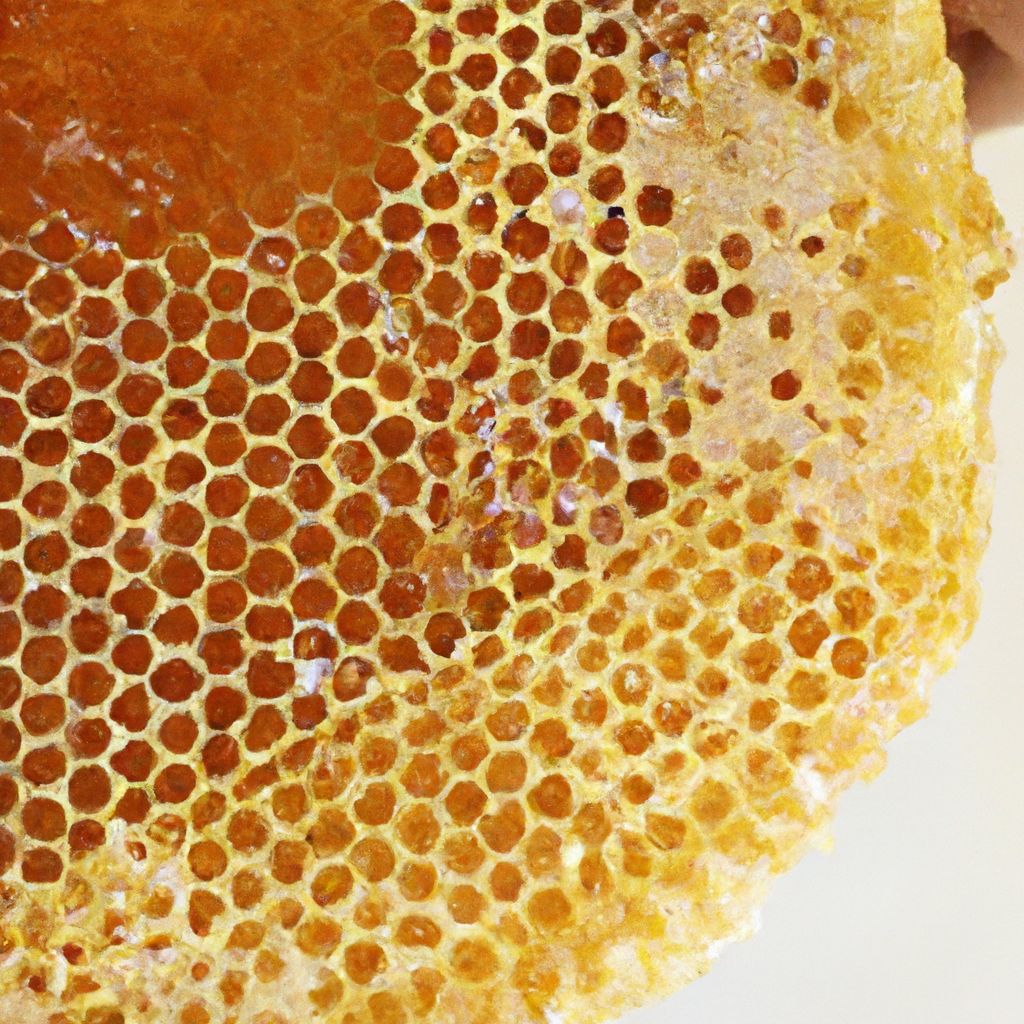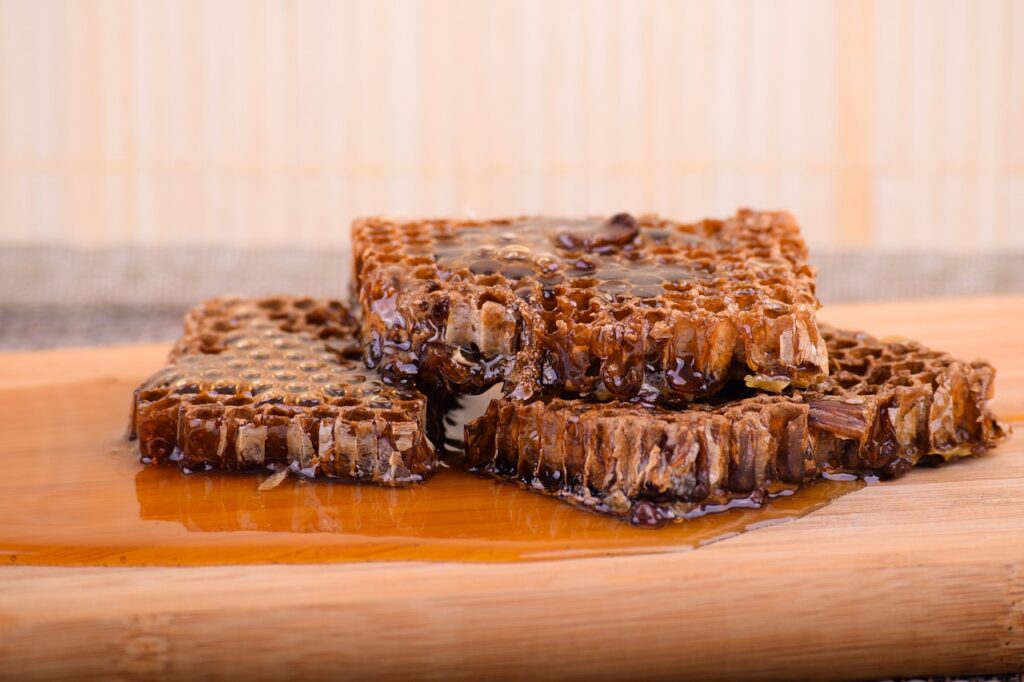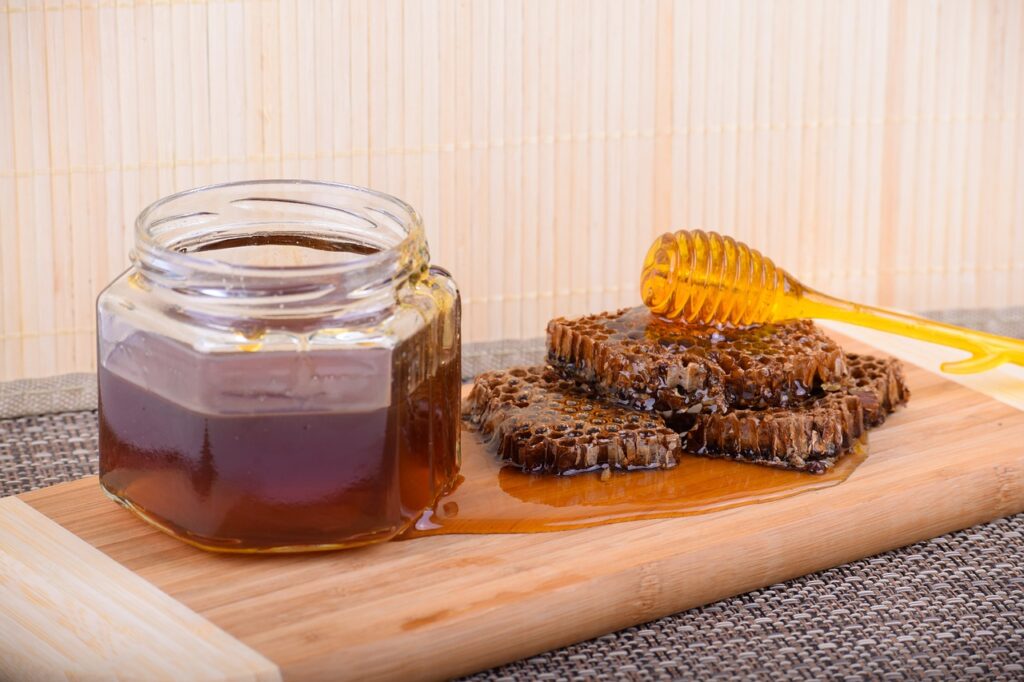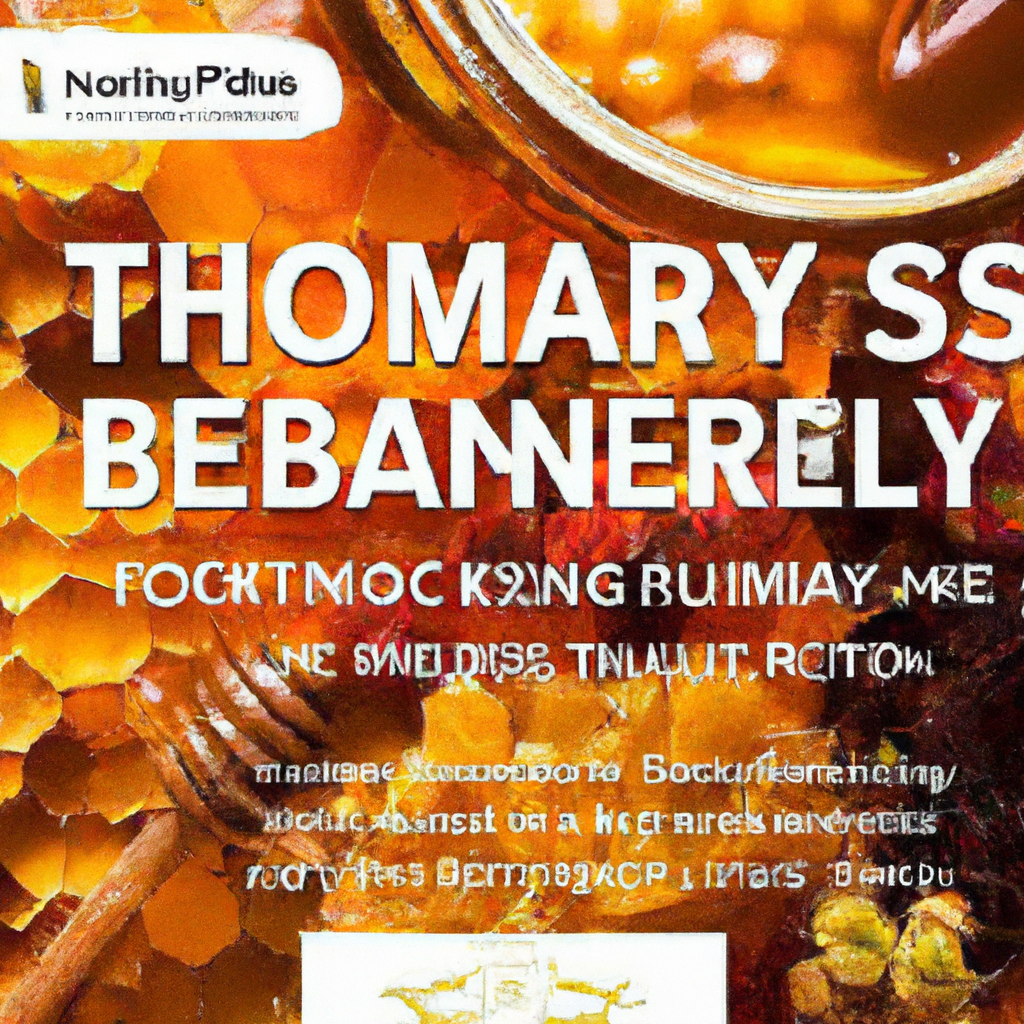
Imagine a world where honey is more than just a sweet treat to drizzle over pancakes or stir into tea. Across cultures and continents, honey has become a cornerstone of culinary traditions, offering a unique array of flavors, textures, and aromas. In this article, we will take you on a delightful journey beyond the bee, as we explore the fascinating world of global honey-based cuisine and the rich traditions that have stemmed from its golden goodness. From the vibrant tapestry of Moroccan tagines to the delicate balance of flavors in Chinese honey-glazed duck, prepare to discover a whole new level of culinary delight. So grab your taste buds and join us as we uncover the diverse and delectable world of honey-infused dishes and the remarkable cultures that have embraced them.

This image is property of pixabay.com.
The Buzz About Honey
Honey is a golden, sticky liquid produced by honey bees from the nectar of flowers. It is not only a sweet and delicious natural sweetener but also a significant part of various cuisines and cultural traditions around the world. From its importance in honey production to its health benefits and diverse uses in cooking and traditional medicine, honey holds a special place in our lives.
The Importance of Bees in Honey Production
Bees play a vital role in honey production. These industrious insects collect nectar from flowers and transform it into honey through a process of regurgitation and evaporation. Bees are not only responsible for pollinating flowers but also ensuring the survival and reproduction of plants. Without bees, the production of honey would be severely limited. Therefore, it is crucial to protect and support bee populations for sustainable honey production.
The Different Types of Honey
Honey comes in a variety of types, each with its own distinct flavor, color, and aroma. The characteristics of honey depend on the flowers from which the bees collect nectar. Some common types of honey include clover honey, acacia honey, wildflower honey, and orange blossom honey. Each type offers a unique sensory experience and can be used in different culinary applications.
The Health Benefits of Honey
In addition to its delightful taste, honey also offers numerous health benefits. It is a natural energy booster, providing carbohydrates that can enhance athletic performance. Honey also contains antioxidants that may help reduce the risk of heart disease and certain types of cancer. Furthermore, honey has antimicrobial properties, making it effective in treating wounds and soothing sore throats. Incorporating honey into your diet can be a nutritious way to enhance overall well-being.
Traditional Uses of Honey
Honey has been an integral part of human civilization for thousands of years. Its significance can be traced back to ancient civilizations and folklore from around the world.
Honey in Ancient Civilizations
Ancient civilizations such as the Egyptians, Greeks, and Romans recognized honey as a precious food source and a powerful symbol of wealth and status. Honey was a staple in their diets and was also used for medicinal purposes, embalming the dead, and even as a form of payment. These ancient cultures understood the value and versatility of honey, integrating it into their daily lives in various ways.
Folklore and Cultural Significance of Honey
Honey has captivating folklore and cultural significance in many societies. In Norse mythology, honey was associated with wisdom and poetry, and it was believed that drinking mead, a fermented honey beverage, could grant inspiration. In some African cultures, honey is considered a sacred food and is used in rituals and ceremonies. Throughout history, honey has been regarded as a symbol of abundance, fertility, and healing, reflecting the deep-rooted cultural significance and reverence for this sweet substance.
Honey-Based Cuisine Around the World
Honey’s distinct flavor and versatility have made it a staple ingredient in cuisines from various regions across the globe. The culinary uses of honey are as diverse as the cultures that embrace it.
Honey in Mediterranean Cuisine
In Mediterranean cuisine, honey is often used as a natural sweetener in both savory and sweet dishes. It adds a delicate sweetness to classic dishes like baklava, a pastry layered with nuts and honey syrup. Honey is also drizzled over cheeses, mixed into dressings, and used to glaze roasted meats, creating a harmony of flavors that embody the essence of Mediterranean cuisine.
Honey in Asian Cuisine
Asian cuisine showcases the unique balance of flavors achieved by incorporating honey into dishes. In Chinese cuisine, honey is used as a glaze for roasted meats like char siu, lending a glossy and caramelized finish. In Indian cuisine, honey is combined with spices to create delectable sauces for savory dishes, such as honey-infused curry sauces. The delicate sweetness of honey complements the bold and vibrant flavors found in Asian dishes, creating a harmonious fusion of taste experiences.
Honey in African and Middle Eastern Cuisine
African and Middle Eastern cuisine also celebrate the richness of honey in their traditional dishes. In Ethiopian cuisine, honey is a key ingredient in traditional mead and honey wine, known as tej. Additionally, honey is incorporated into various breads, stews, and desserts, adding depth and complexity to the flavors. Middle Eastern cuisine, particularly in countries like Iran and Turkey, features honey in dishes such as sweet pastries, glazed meats, and drinks like sharbat, a refreshing and aromatic honey-infused beverage.
Honey in European Cuisine
European cuisine embraces the natural goodness of honey in both sweet and savory preparations. In France, honey is often paired with cheese, creating a delightful combination of flavors. In Spain, honey is drizzled over crispy churros or used as a glaze for roasted meats, adding a touch of sweetness. Honey is also a key ingredient in traditional British desserts like honey cakes and honeycomb toffee. The diverse culinary traditions of Europe have found creative ways to incorporate honey, highlighting its unique characteristics in their delicacies.
Honey in North and South American Cuisine
In North and South American cuisines, honey finds its place in a variety of dishes. In Mexican cuisine, honey is used to balance the heat of spicy salsas and marinades, contributing a natural sweetness. Native American tribes have a long history of using honey in traditional recipes, such as cornbread sweetened with honey or wild berry compotes with a honey drizzle. In South America, honey is featured in typical dishes like Brazilian honey cake and Colombian honey-glazed lechona. The varying culinary cultures across North and South America showcase honey’s versatility in cooking.
Honey Infusions and Variations
In addition to its natural form, honey can be infused with herbs and spices to create aromatic and flavored varieties. These infusions add a new dimension to the already rich and diverse world of honey.
Infusing Honey with Herbs and Spices
Infusing honey with herbs and spices allows for the creation of customized flavor profiles. From lavender-infused honey to rosemary-infused honey, the possibilities are endless. These flavored honey infusions can be used to elevate dishes, enhance the flavor of beverages, or add a unique twist to desserts. The combination of honey’s sweetness and the aromatic qualities of herbs and spices results in a delightful sensory experience.
Flavored Honey Varieties
Beyond honey infusions, flavored honey varieties are gaining popularity. The natural sweetness of honey pairs well with a wide range of flavors, including cinnamon, vanilla, and citrus. These flavored honey varieties are often used as toppings for pancakes and waffles, incorporated into marinades, or added to warm drinks for an extra burst of flavor. Whether used as a spread, a drizzle, or a glaze, flavored honey brings a touch of creativity to culinary creations.

This image is property of pixabay.com.
Honey in Baking and Desserts
Honey’s unique properties make it a desirable ingredient in baking and dessert recipes. Its natural sweetness, moistness, and depth of flavor enhance a wide range of treats.
Honey as a Natural Sweetener in Baking
Honey is a popular alternative to granulated sugar in baking due to its natural sweetness and distinct flavor. It adds moisture to cakes, cookies, and bread, resulting in tender and flavorful treats. The floral notes of honey can complement various ingredients, from fruits to nuts, creating delectable combinations. Honey is also a key ingredient in beloved desserts like honey muffins, honey biscuits, and honey bread pudding.
Classic Honey-Based Desserts from Different Cultures
Honey takes center stage in classic desserts from different cultures. In Greece, the indulgent dessert baklava showcases layers of phyllo pastry, nuts, and a honey syrup that seeps through each bite. In Italy, torrone, a nougat made with honey, almonds, and other nuts, is a beloved treat during the holidays. India’s traditional sweet, called shahi tukda, features honey-soaked bread topped with a creamy milk sauce and garnished with nuts and saffron. These desserts exemplify how honey transcends borders and creates a delightful sensory journey through cultures.
Honey in Savory Dishes
While honey is often associated with sweetness, it can also be a delightful addition to savory dishes, adding complexity and balance to the flavors.
Honey as a Glaze or Sauce for Meats
Honey’s natural sweetness makes it a fantastic glaze or sauce for meats, providing a caramelized coating and depth of flavor. Glazing a ham with honey creates a beautiful golden finish and a sweet and savory taste. Honey-based barbecue sauces add a rich, sticky sweetness to grilled chicken or ribs. Whether brushed on during cooking or used as a dipping sauce, honey brings a delightful contrast to the savory elements of meat dishes.
Honey in Salad Dressings and Marinades
Honey’s versatility extends to salad dressings and marinades, where it adds a touch of sweetness and helps balance other flavors. By combining honey with ingredients like vinegar, mustard, or citrus juice, a harmonious balance is achieved. Honey-based dressings and marinades can transform a simple salad or marinated meat into a flavorful and satisfying dish. The combination of sweet and tangy flavors adds dimension to these culinary creations.

This image is property of pixabay.com.
Honey in Beverages
Besides being an ingredient in cooking and baking, honey also has a place in the world of beverages. Its distinctive taste and natural goodness can be enjoyed in various drinks.
Honey in Hot Drinks
Honey adds warmth and sweetness to hot drinks, making them even more comforting. From a soothing cup of honey-infused herbal tea to the classic remedy of hot lemon and honey water for a sore throat, honey brings a comforting touch to these beverages. Hot toddies, made with honey, lemon, spices, and liquor, are also a popular choice during colder months, offering a cozy and indulgent experience.
Honey in Cocktails and Mocktails
Honey’s versatility extends to the world of cocktails and mocktails. Its rich and complex flavors can enhance the taste and presentation of beverages. In cocktails, honey is used as a natural sweetener, replacing traditional simple syrup. From honey-infused margaritas to honey bourbon cocktails, the unique sweetness of honey adds a unique twist to classic recipes. For those abstaining from alcohol, honey can be a key ingredient in refreshing mocktails that provide a burst of flavor without the buzz.
Honey in Traditional Medicine
Beyond its culinary uses, honey has also been utilized in traditional medicine for its healing properties. Ancient cultures recognized its potential in treating various ailments and have passed down remedies through generations.
Honey-Based Remedies
Due to its antimicrobial properties, honey has long been used as a natural remedy for wounds and infections. Applying honey to a wound can help prevent infection and promote healing. Honey can also be used as a soothing remedy for sore throats. Mixing honey with warm water and lemon juice offers relief and can help soothe inflammation. These honey-based remedies showcase the powerful healing qualities that have been recognized for centuries.
Honey in Ayurvedic and Traditional Chinese Medicine
In Ayurvedic and Traditional Chinese Medicine, honey plays a significant role in promoting balance and well-being. Ayurveda considers honey as a vital ingredient in herbal preparations, promoting digestion, and rejuvenation. Traditional Chinese Medicine views honey as a nourishing tonic that can enhance the body’s energy and support overall health. These ancient healing systems recognize the unique properties of honey and incorporate it into holistic practices.

Honey Celebrations and Festivals
Honey’s cultural significance is celebrated through various festivals and traditions around the world. These events honor the importance of honey and its connection to the community.
Honey Festivals Around the World
Honey festivals bring together communities to celebrate the beauty and bounty of honey. In Slovenia, the annual Honey Festival pays homage to beekeeping traditions, with honey vendors showcasing their products and live demonstrations of honey extraction. The Honey Harvest Festival in California, USA, offers an opportunity for visitors to taste an array of locally produced honey and learn about the importance of bees. These festivals provide a platform to educate and raise awareness about the significance of honey and the role bees play in its production.
Honey Celebrations in Different Cultures
Honey celebrations and traditions vary across different cultures, reflecting their unique customs and beliefs. In Poland, the tradition of jarring honey, known as the Honey Harvest Festival, is a symbolic event that honors beekeepers and signifies a successful honey harvest. In Ethiopia, the Genna Festival brings communities together to celebrate honey and share blessings for the new year. These celebrations highlight the cultural diversity surrounding honey and its importance in creating connections within communities.
The Future of Honey Cuisine
As the culinary world continues to evolve, so does the use of honey in innovative and sustainable ways.
Innovations in Honey Production and Culinary Applications
With advancements in technology, honey production has become more efficient while maintaining its natural integrity. Innovations such as sustainable beekeeping practices, precision honey extraction, and the research and cultivation of new honeybee breeds are shaping the future of honey production. Additionally, culinary applications of honey are expanding beyond traditional uses, with chefs experimenting with unique flavor pairings and techniques to create extraordinary dining experiences.
Sustainable Practices for Beekeeping and the Honey Industry
Concerns about the decline in bee populations have led to increased focus on sustainable practices in beekeeping and the honey industry. Efforts are being made to protect habitats, promote biodiversity, and reduce the use of chemicals that may harm bees. By supporting local beekeepers and purchasing sustainably produced honey, we can contribute to the preservation of bees and the ecosystems they inhabit.
In conclusion, honey is not just a sweet ingredient; it is a symbol of culture, history, and culinary creativity. It plays a vital role in honey production, showcases its diversity in various cuisines, and boasts a plethora of health benefits. From ancient civilizations to modern-day celebrations, honey has enchanted and nourished humankind for centuries. As we look towards the future, it is essential to embrace sustainable practices and continue exploring the endless possibilities of honey-based cuisine. So, go ahead, savor the sweetness and connect with the rich traditions that surround this golden elixir.
